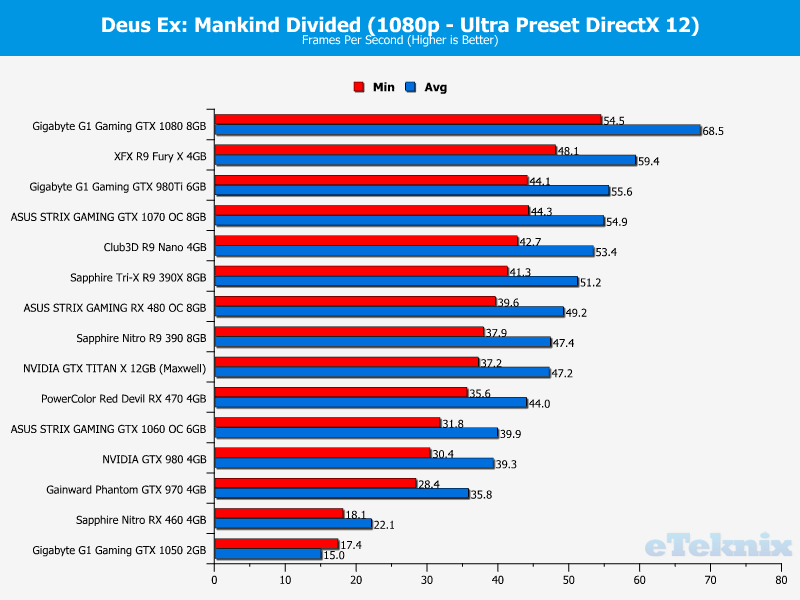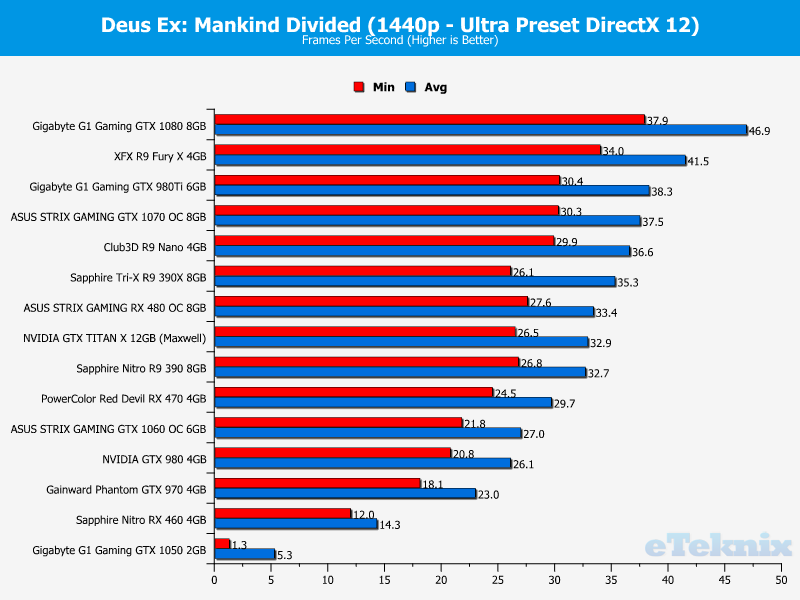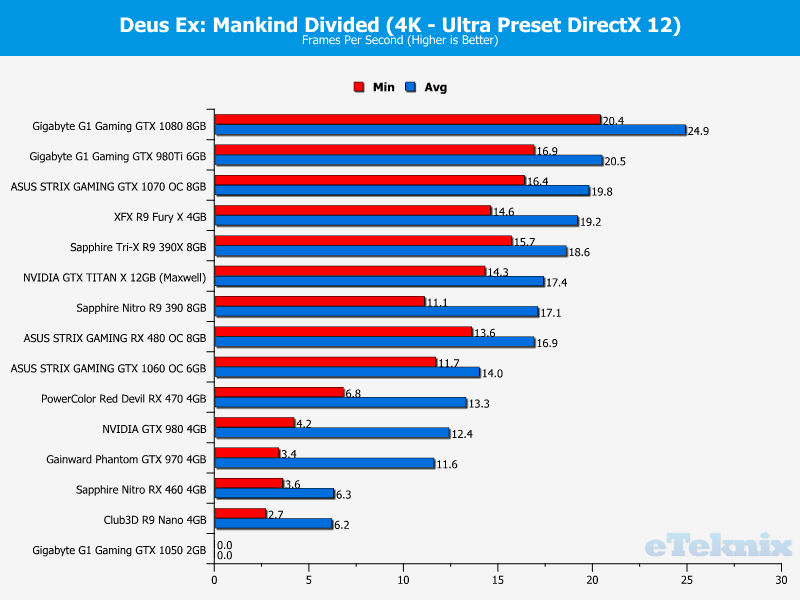Deus Ex: Mankind Divided Performance Analysis
John Williamson / 8 years ago
Deus Ex: Mankind Divided – 1080p, 1440p and 4K DirectX 12 Benchmarks
Switching to the DirectX 12 API doesn’t dramatically alter the ranking order although there’s an interesting pattern which emerges. It seems NVIDIA solutions perform identical or slightly worse while AMD cards have a minor performance enhancement. Once again, the GTX 1080 destroys the all the other GPUs and is tantalising close to a 70 frames per second average. The R9 Fury X comes in second place and the DirectX 12 API results in a 2.5 frames improvement. As expected, the GTX 980Ti is in third followed by the GTX 1070. This time, the R9 Nano narrows the gap to the GTX 1070 and provides a wonderful user experience. The R9 390X and RX 480 also perform very well and remain ahead of the GTX Titan X.
Rather surprisingly, the RX 470 has a good lead over the GTX 1060 and other popular NVIDIA products. The GTX 980 appears to be on parity with the GTX 1060 which suggests both architectures aren’t utilising the DirectX 12 API in a proficient manner.

After setting the resolution to 2560×1440, the GTX 1080 maintains a perfectly playable frame rate. Saying that, it’s not ahead of the R9 Fury X by a huge degree which is a testament to the performance of AMD’s current flagship GPU. In third place is the GTX 980Ti which just about finishes ahead of the GTX 1070 and R9 Nano. Selecting the DirectX 12 API allows the R9 Nano to become more competitive while the NVIDIA options stay stagnant. Another great showing for AMD occurs in the mid-table as the R9 390X and RX 480 eclipses the GTX Titan X. In comparison to the RX 480, the GTX 1060 performance is lacking and falls behind the RX 470. Clearly, the lower-end Pascal options and Maxwell GPUs perform worse than expected.

The DirectX 12 API doesn’t really help matters to make 4K gaming on the ultra preset a distinct possibility. Furthermore, the extraordinary low numbers illustrate the game’s demanding nature and need for a dual-GPU solution to get anywhere near 60 frames per second. Hopefully, future single cards will be able to achieve this highly difficult feat.




















